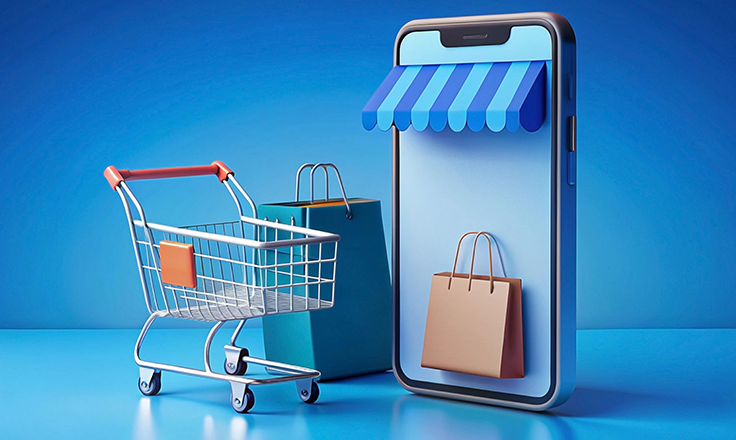The 4 Ways Outdated Loyalty Tech is Damaging UK & Irish Retail
- Published
- 4 min reading
It seems like every major retailer is revamping their loyalty program this year, responding to customers who demand instant value. But don't let the headlines fool you. Many of these "innovations" are just shiny new patches on top of clunky, outdated technology that chugs along in the background.
When it takes your team weeks just to launch a simple new offer, you've got a dangerous agility gap, a growing canyon between what the market wants and what your tech can actually deliver. And that gap comes with a hefty price tag.
Continue reading to discover:
- The 4 hidden costs quietly draining your loyalty budget
- A simple framework to calculate the real price of inaction
- Candid quotes from loyalty specialists on the inside
- Real stories from UK & Irish retailers who said goodbye to legacy tech
How to Calculate the Real Cost of Inaction
When your loyalty platform is not built for speed, the costs are not abstract. They are real, measurable, and likely already impacting your balance sheet.
1. The Cost of Operational Drag
Your teams are your most valuable asset, but how much of their time is wasted? Forrester data shows that a top challenge for companies is "staffing and/or resources" to manage their loyalty programs. This is the direct cost of manual work required to operate rigid systems.
Your Internal Calculation:

“You have this brilliant, creative marketing team, and they come up with a fantastic idea. But with the old system, you’d have to tell them, 'Great idea, but we'll need to put in a ticket with IT.' By the time it gets coded, tested, and deployed, the initial buzz is a distant memory. You end up planning your promotions around your tech's limitations, not your customers' excitement.”
-Magdalena Pudełko, Business Development Manager at Comarch
2. The Cost of Customer Churn
An unengaging program doesn't just fail to excite customers; it actively encourages them to leave. We know that modern features like gamification are in high demand, with 27% of UK consumers wanting them in loyalty programs in 2025, because they are proven to reduce customer churn.
Your Internal Calculation:
Assume a modern, engaging program could reduce your churn by a conservative 10%.

"Customers don't usually leave in a big, dramatic exit. It’s a quiet drift. They just stop opening the app because the offers inside aren't relevant to their life. They forget to scan their card at checkout because the value isn't immediate or clear.
A legacy system tends to treat everyone the same, but your best customers know they aren’t the same as a first-time shopper. When they don’t feel seen or rewarded for their loyalty in a personal way, they just fade away to a competitor who makes them feel valued."
- Zofia Woźniak, Consulting Director, at Comarch
3. The Cost of Missed High-Margin Revenue
This is perhaps the most significant cost: the revenue you cannot generate because your technology is a barrier. The clearest example of this is the inability to launch a Retail Media Network (RMN)—a high-margin business where brands pay to advertise using your first-party data. With the European market for retail media projected to reach €31 billion by 2028, it is reshaping the future of digital advertising.
However, launching a successful RMN requires the ability to serve up personalized, real-time offers and ads. If your legacy system can't even support a simple weekend promotion without weeks of coding, it stands no chance of powering a sophisticated, multi-million-pound media business, leaving all that potential profit on the table for your more agile competitors.
Your Internal Calculation:

"The most frustrating conversations are with potential brand partners. A great snack brand will come to you and say, 'We want to run a campaign targeting customers who bought a competitor's product in the last 30 days.' With old tech, you’d have to say, 'We can probably pull that data for you by next week, and then maybe send an email.' They look at you, and you know what they're thinking: other retailers can do that in real-time. That’s an entire high-margin revenue stream missing."
-Magdalena Pudełko, Business Development Manager, at Comarch
4. The Hidden Cost of Partial Innovation (The "Innovation Debt")
Perhaps the most dangerous cost is the one incurred by trying to fix the problem halfway. Faced with the limitations of a legacy system, some businesses invest millions in a single "bolt-on" module, like a standalone gamification engine, without overhauling the core.
Because this new module isn't fully integrated, it cannot access real-time customer and transaction data. The "gamified" experience feels generic, fails to drive engagement, and the ROI never materializes. The project is seen as a failure, creating a long-term "Innovation Debt." The business becomes more reluctant to invest in the loyalty space, making it nearly impossible to get approval for the foundational change that was needed in the first place.
The Strategic Risk: This 'Innovation Debt' can delay a necessary platform overhaul by years, allowing competitors to widen their lead. The ultimate cost is the sum of all the other costs—Churn, Missed Revenue, and Operational Drag—for every additional year the business delays making the right decision because it was burned by a failed, partial solution.
"The worst part of a 'bolt-on' project is the slow, sinking feeling you get six months down the line. You can spend a fortune on a flashy new gamification engine, but because it wasn't truly connected to your core system, the 'games' are generic. Like offering a vegan a coupon for meat because it couldn't see what they were actually buying. A project like that will fail, and you will lose money and trust."
-Zofia Woźniak, Consulting Director at Comarch

How Leading Retailers are Turning Legacy Loyalty Tech into Profit
Tesco
Let’s take a look at the evolution of the Tesco Clubcard, one of the most well-known loyalty programs in the UK and Ireland. For years, the program operated on a traditional point-collection model, a system that can struggle to provide the "instant value" that modern customers now demand.
Recognizing a potential agility gap, Tesco introduced "Clubcard Prices." This move transformed the program from a delayed-reward system into a powerful tool for immediate gratification. The benefits were twofold:
- Reduced Customer Churn: By offering significant, instant discounts at the point of sale, Tesco created a compelling and constant reason for customers to stay loyal. This directly combats program stagnation, where unengaged customers might shop elsewhere.
- Increased Engagement and Data Value: The immediate savings are highly engaging and provide a frictionless way for customers to get value. This frequent, positive interaction deepens the customer relationship and provides Tesco with a wealth of real-time data.
SuperValu
Another prime example is SuperValu. Their loyalty strategy was historically built on legacy programs that, while functional for a time, were eventually outpaced by new technology, aggressive competitor offerings, and shifting customer expectations.
The influx of new loyalty schemes from competitors made it a business necessity for SuperValu to refresh its approach. The goal was to create a program that could make SuperValu the "first choice" grocer but was also future-proofed. By moving beyond the limitations of older systems, they could tap into their customers' new loyalty triggers and ensure the program continued to deliver significant value for the business, effectively closing the gap between their existing tech and what the market demanded.

Closing the Gap: It’s a Foundational Issue
The moves by major UK retailers are a clear sign that pressure to innovate has reached a boiling point. But sustainable, profitable loyalty isn't about the next clever offer; it's about the underlying technology that empowers you to deliver any offer, at any time, without friction.
True innovation requires a foundational shift. It demands a modular, AI-powered platform built for the speed and complexity of modern commerce—a platform where you can configure and launch a new campaign in minutes, not months.
The question for UK retail leaders is no longer if they should innovate, but how. Continuing to patch up old technology doesn't close the agility gap—it just makes it wider and more expensive with each passing quarter.
If these challenges sound familiar, you don't have to solve them alone. For a deeper dive into future-proof loyalty technology, learn more about the Comarch Loyalty Marketing Platform for Retail. Or, if you'd like to talk through your unique situation, book a friendly, no-obligation chat with our team. We can help you map out what's possible.



